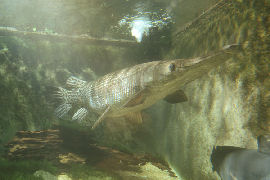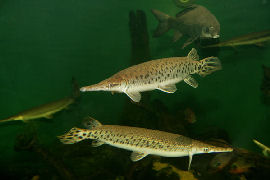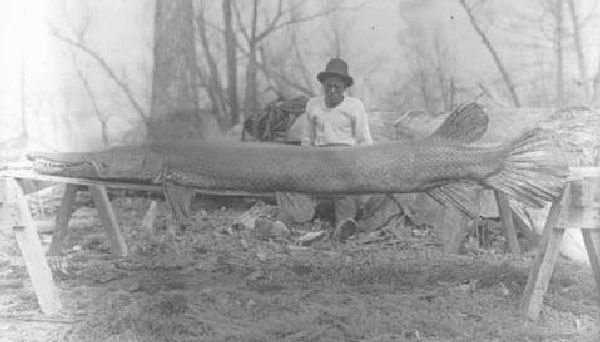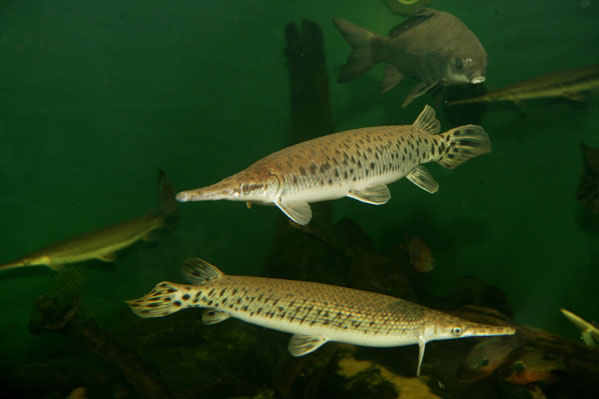Elongated fish with long snouts
Description
They are one of the most distinctive freshwater fish species. Alligator gars are the largest of all gar species with a head that looks very much like an alligator's. They can be distinguished from all other gars species by the two rows of teeth in the upper jaw, their short-broader snout, and their size when fully grown. The body is long, slender, and olive or greenish brown (sometimes black) along the back. The dorsal surface of the alligator gar is a brown or olive-color, while the ventral surface tends to be a lighter color. The sides are mottled toward the head with large black spots toward the rear and on the rear fins. The young have a light stripe along their back from tip of snout to upper base of caudal fin. Unlike other gars, the mature alligator gar possesses a dual row of large teeth in the upper jaw. It is these remarkably alligator-like teeth which gives it its name.
Warning
The roe (eggs) of the Alligator Gar are considered poisonous.
Discussion
They can reach lengths of up to 10 feet and weights of more than 200 pounds. Because of their huge size and great strength, alligator gars are popular with anglers. Their scales are diamond-shaped and interlocking (ganoid) and were once used by Native Americans for jewelry. They are edible, but are not highly rated by most people. As with other gars, the roe is toxic. The world record is 279.00 pounds, caught in the Rio Grande River, Texas, in 1951. Even larger alligator gars — over 300 pounds — have been caught by trotliners.






